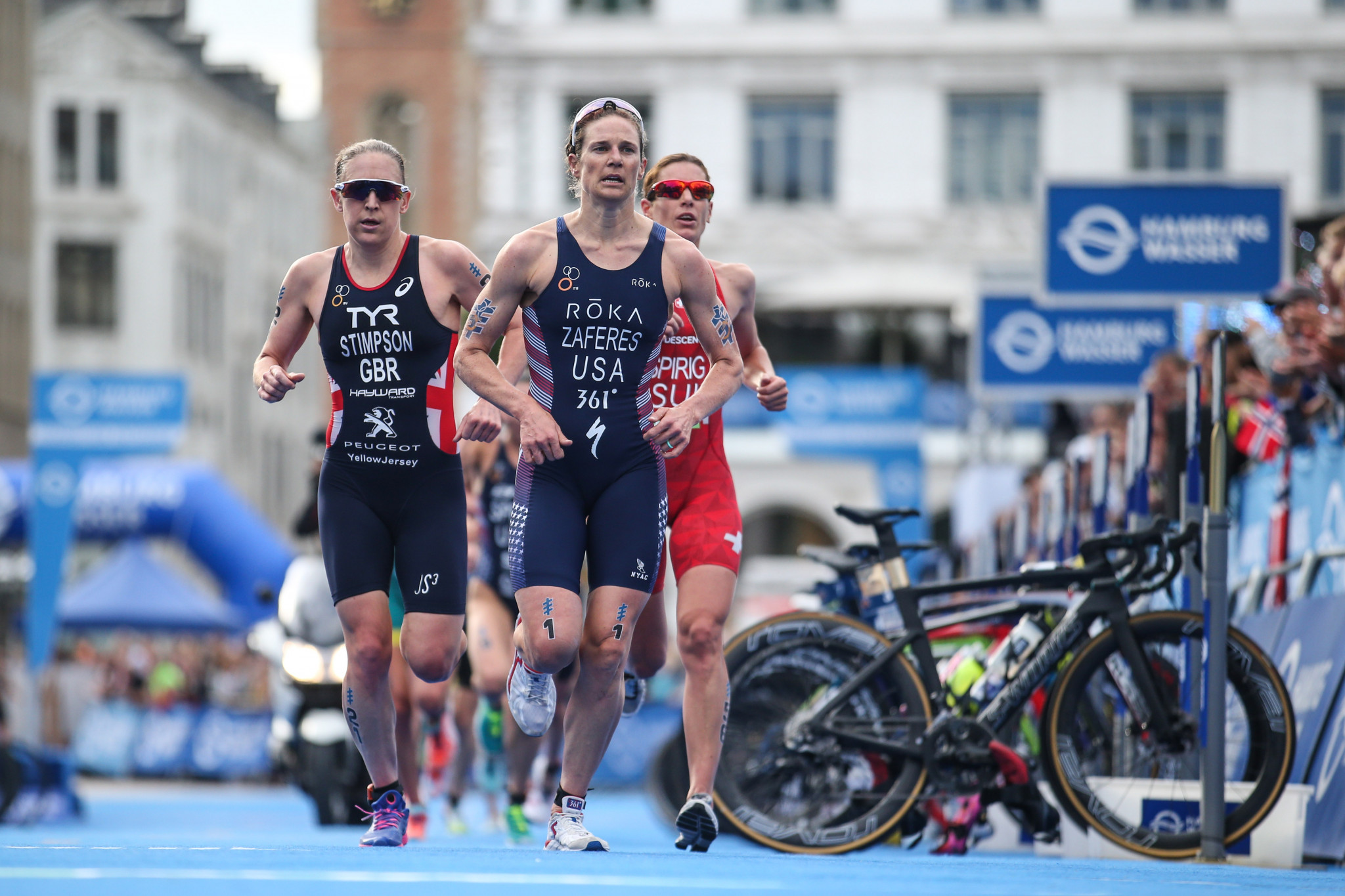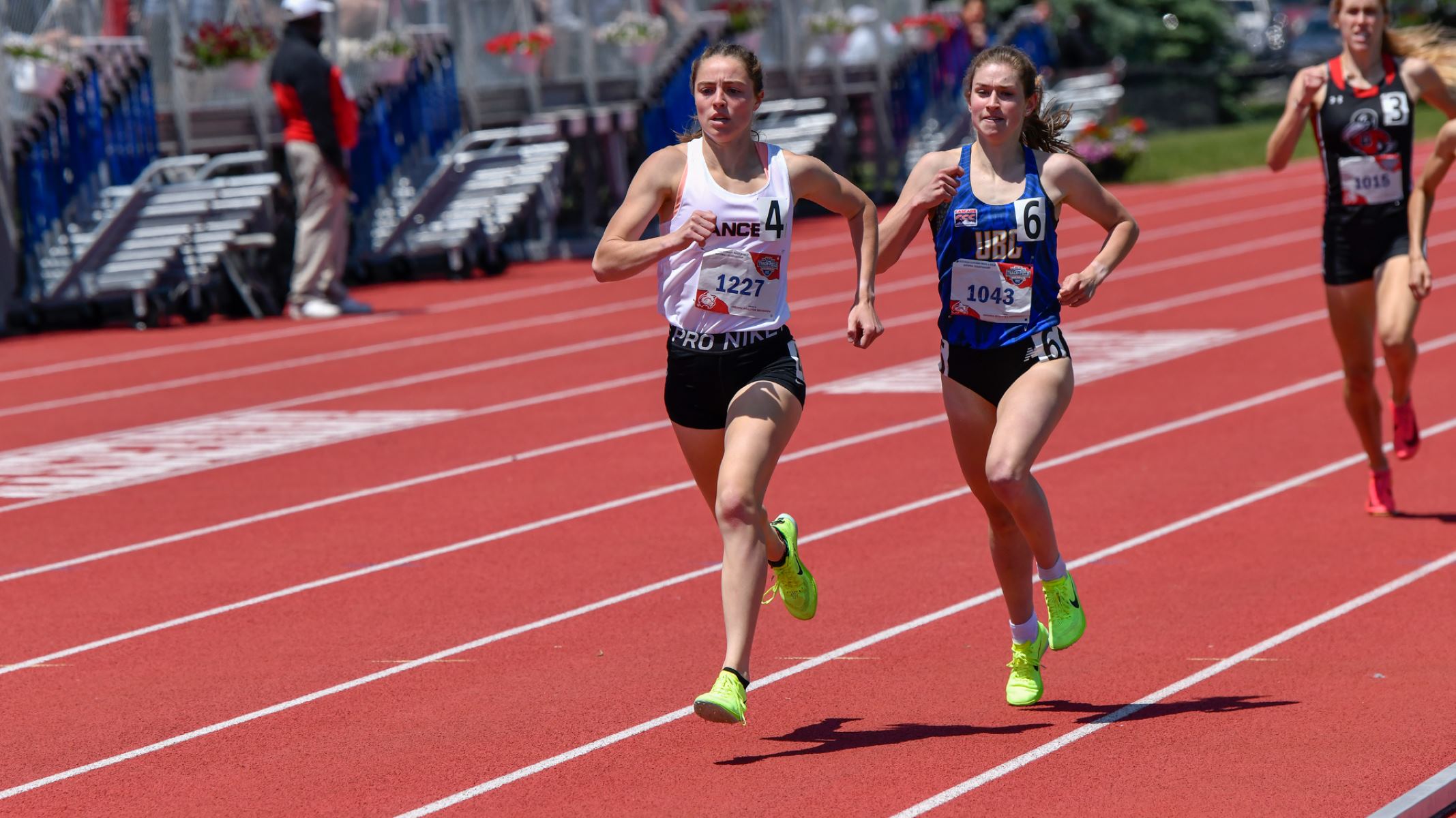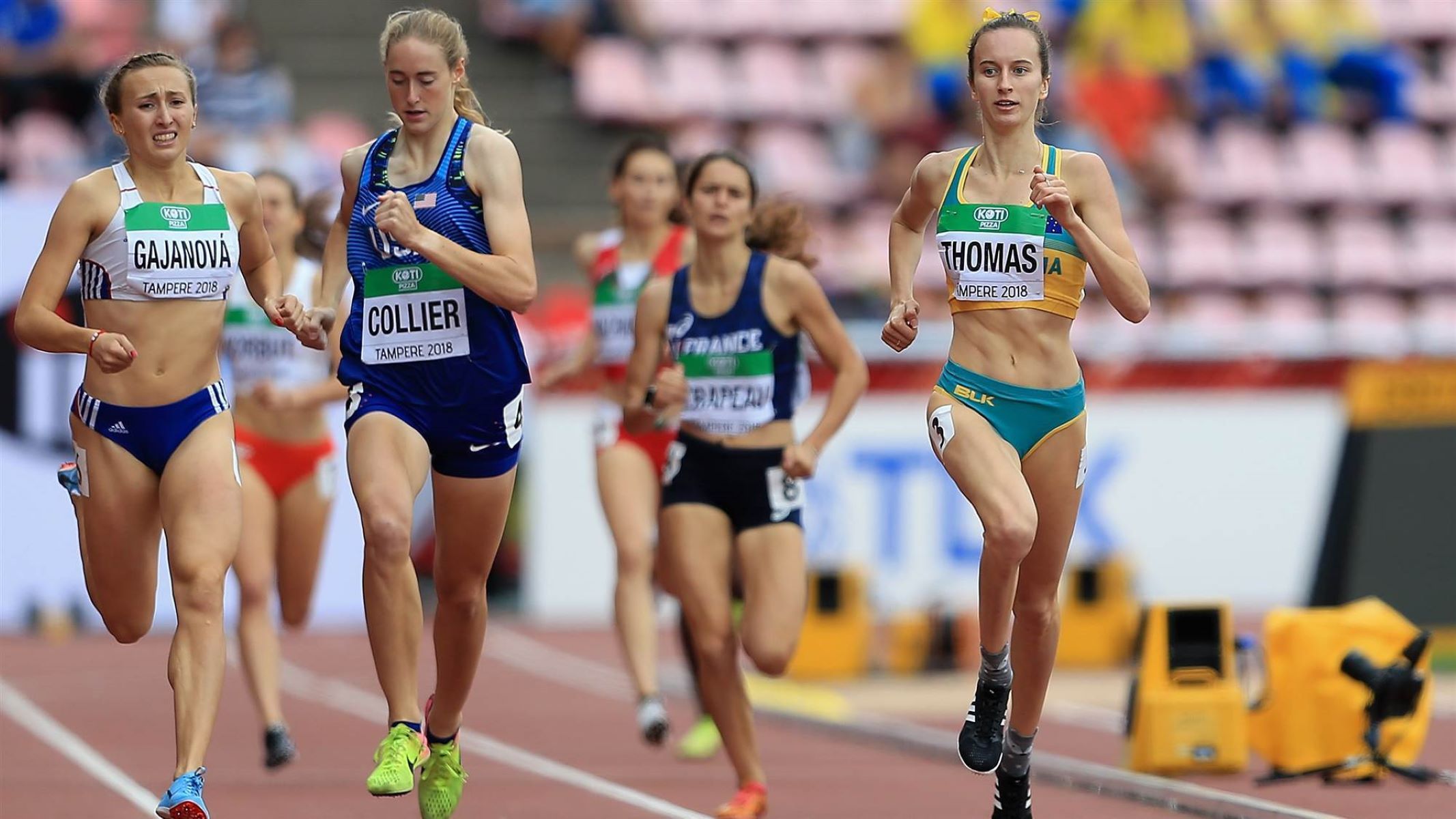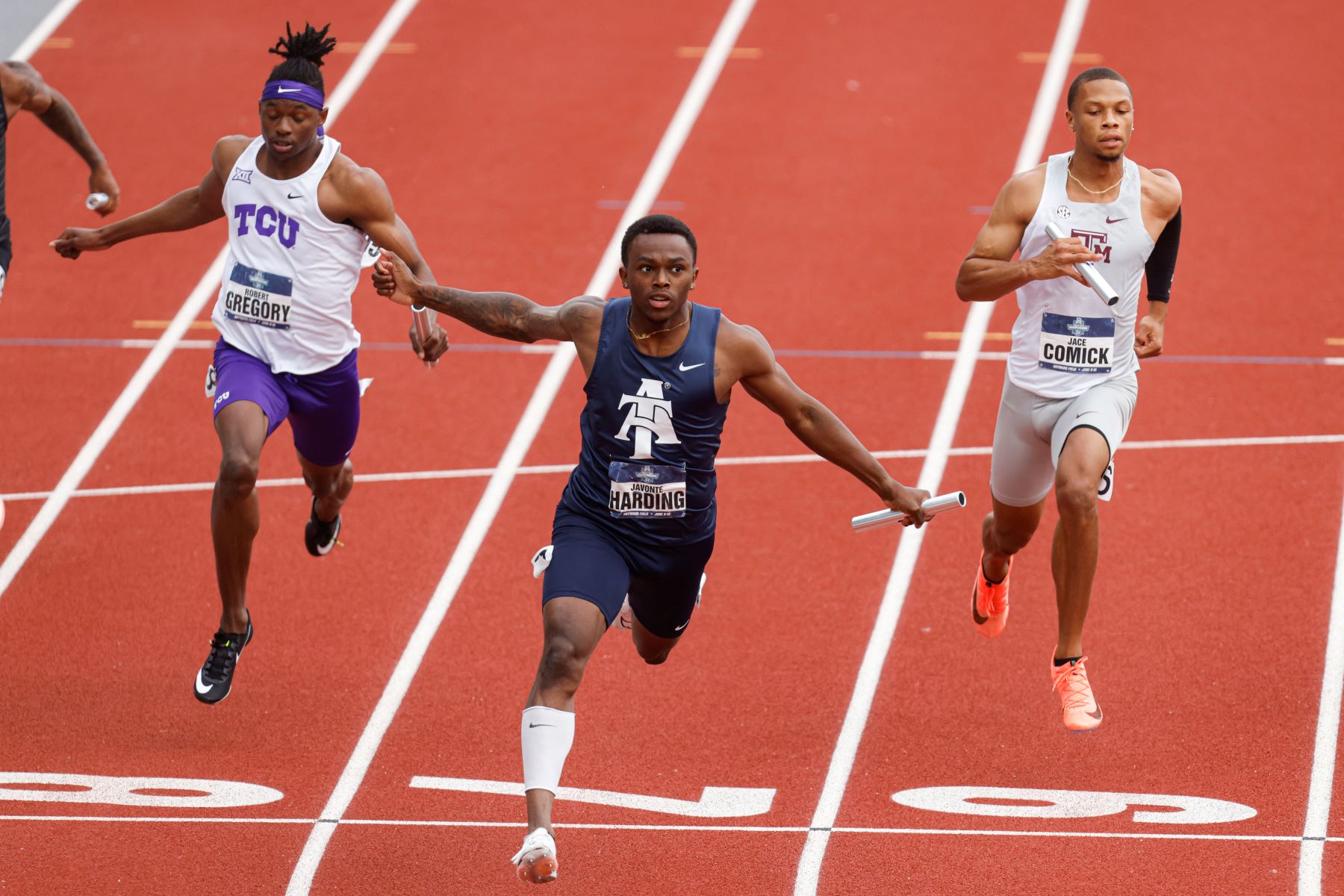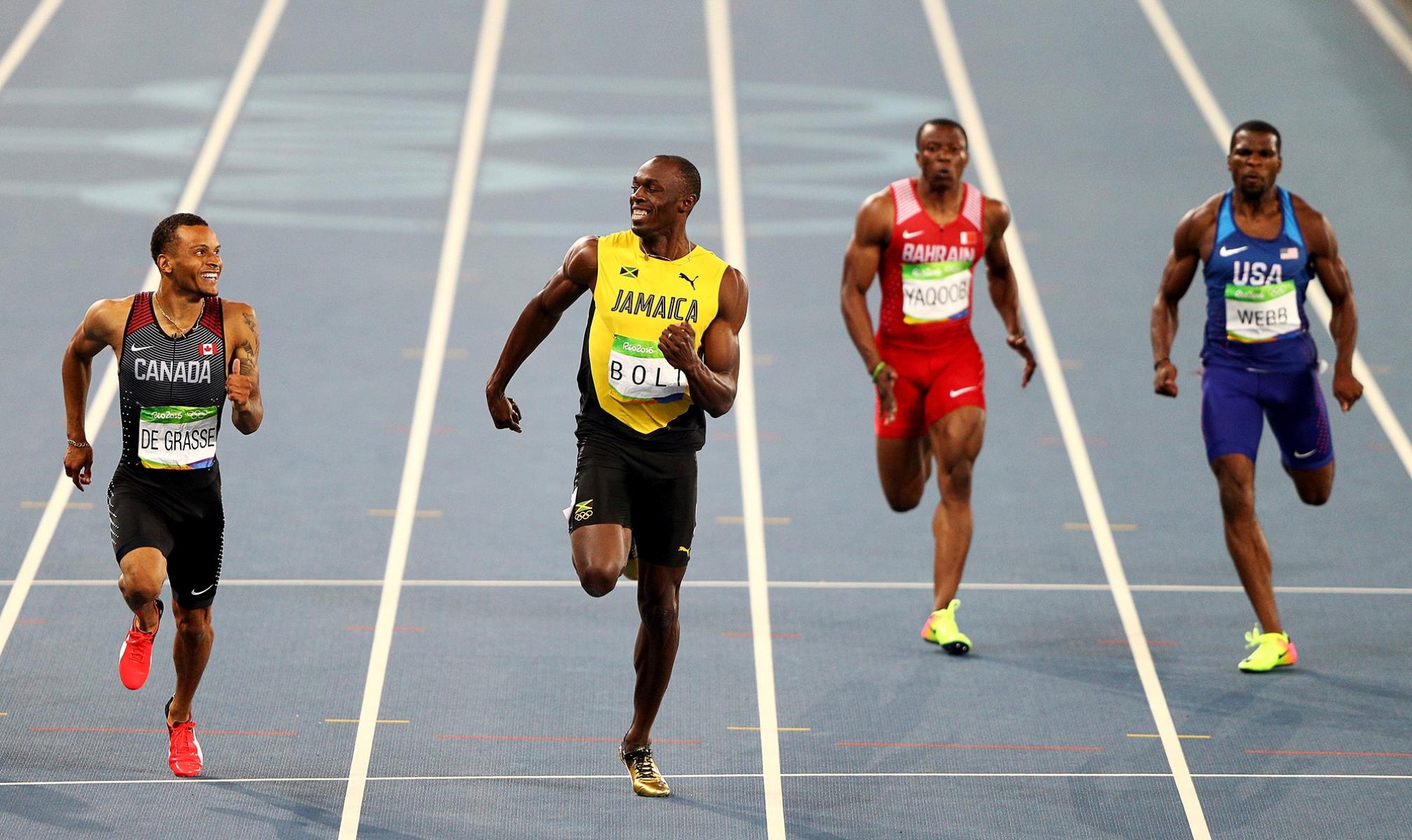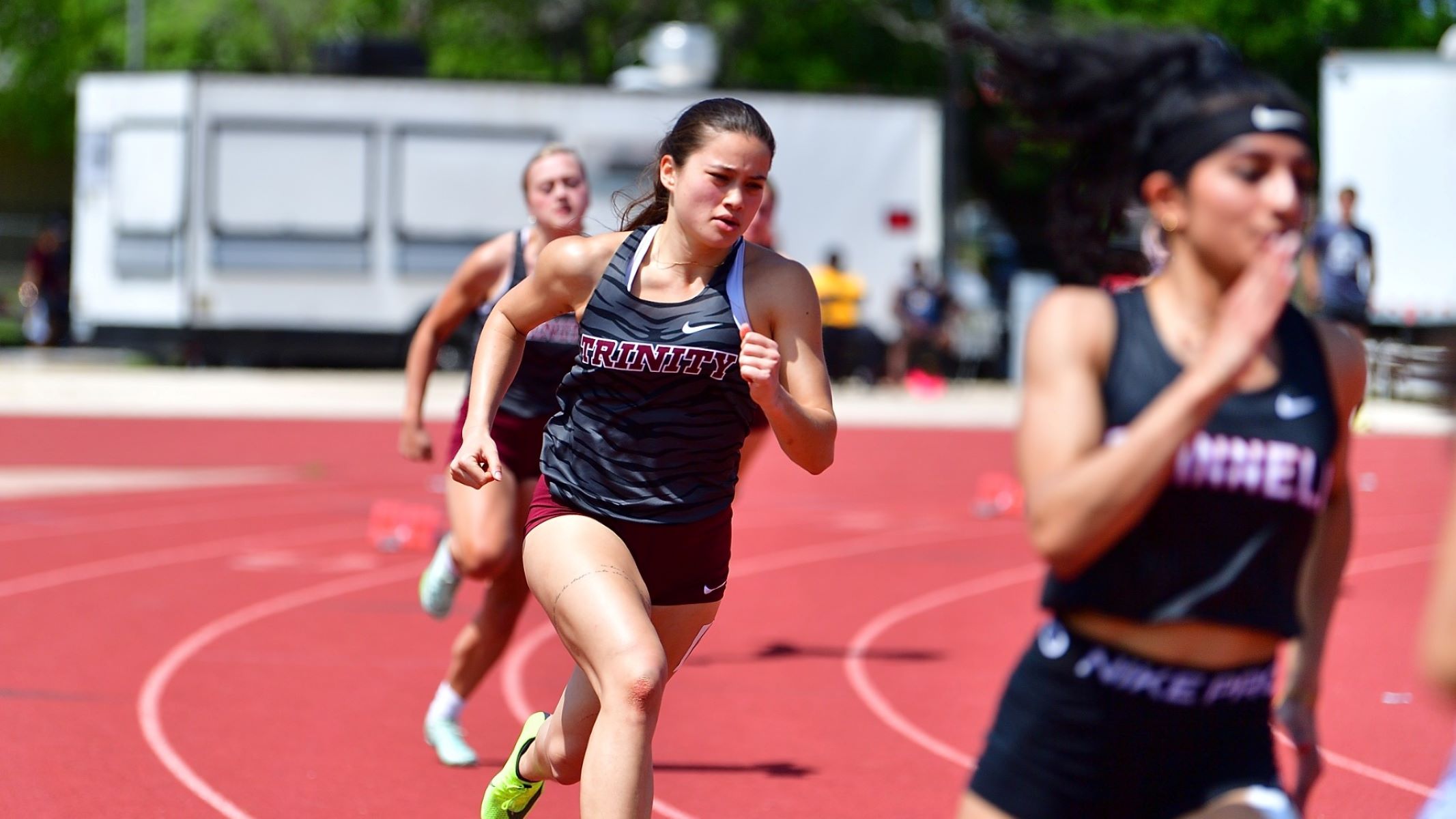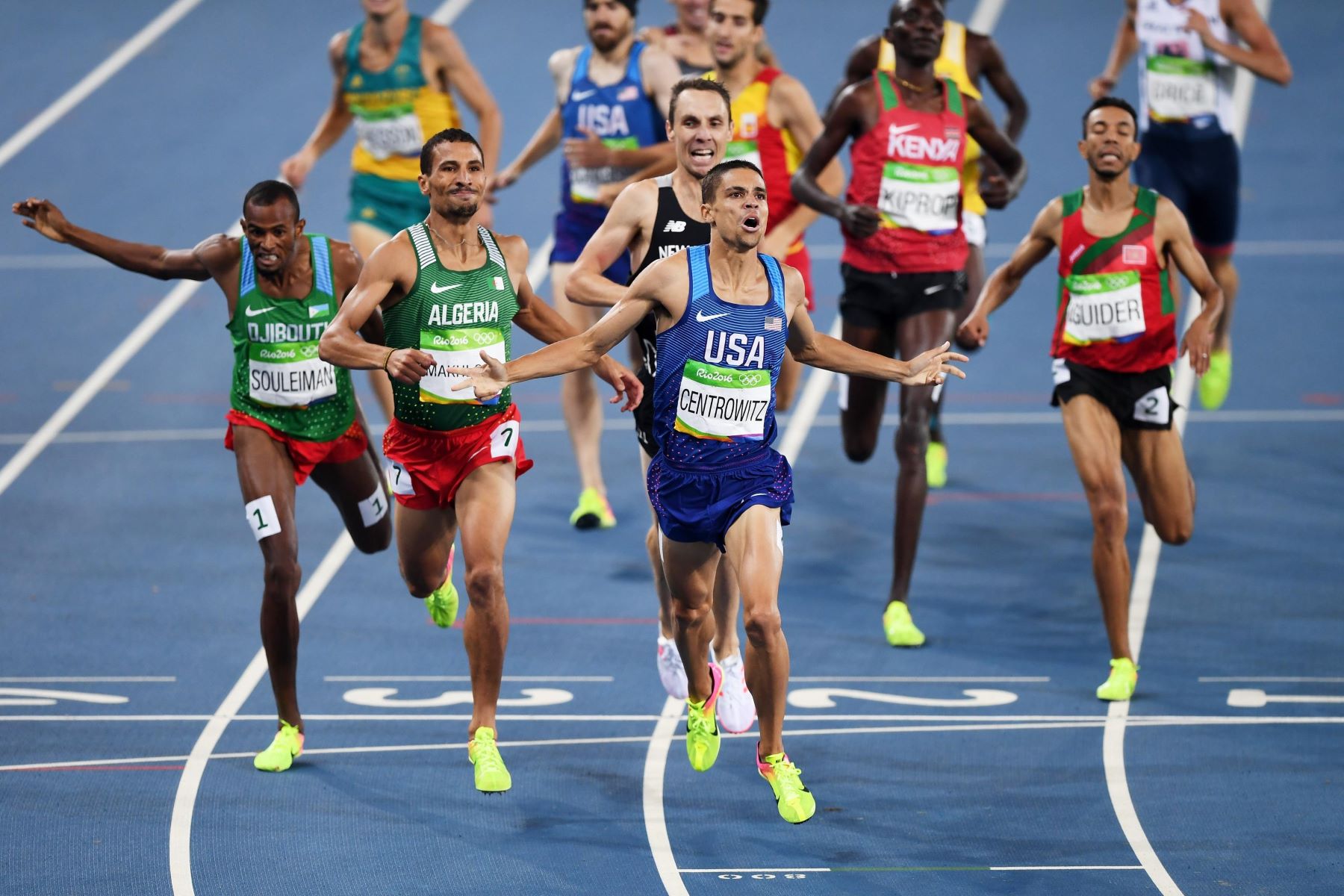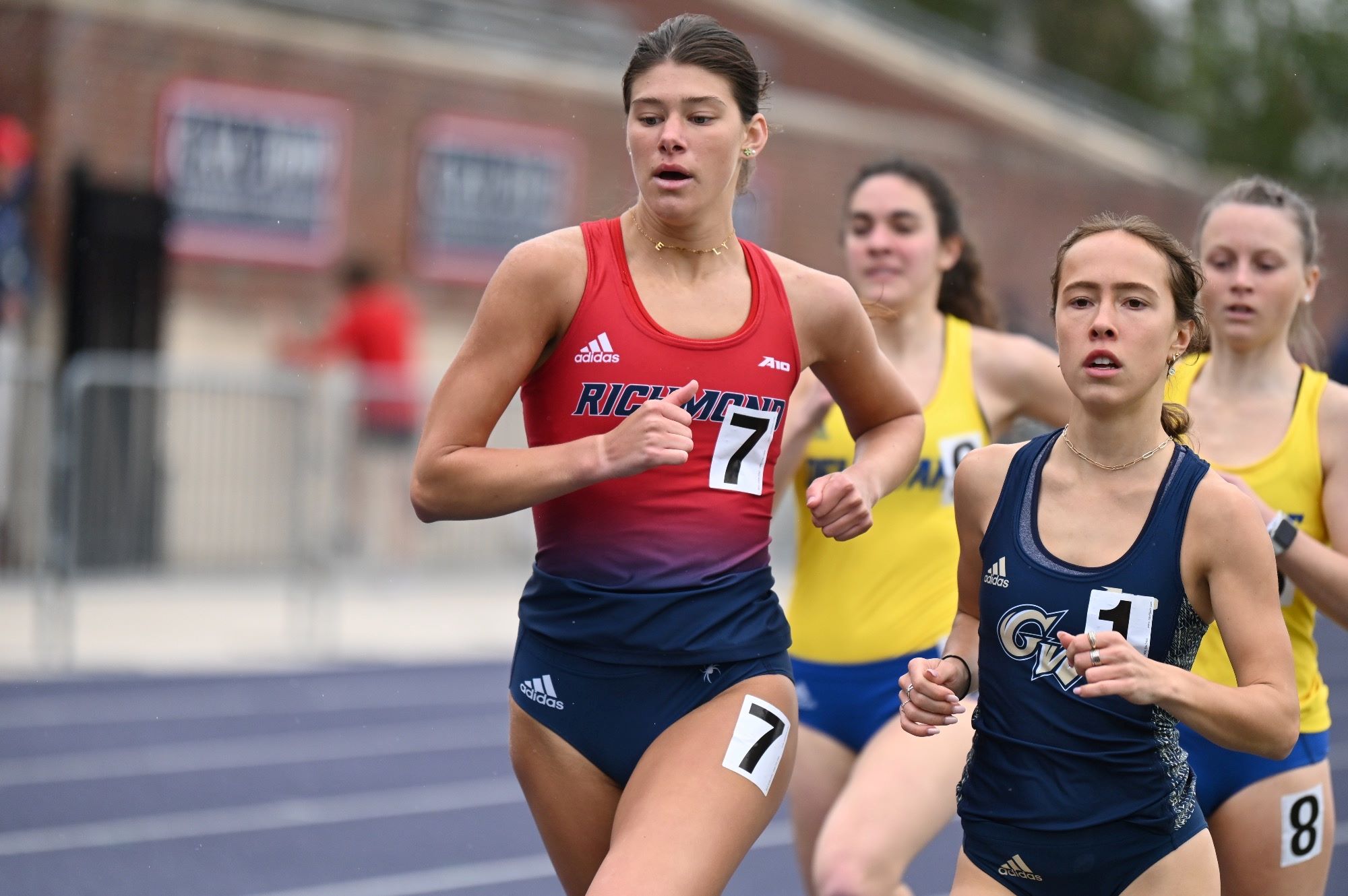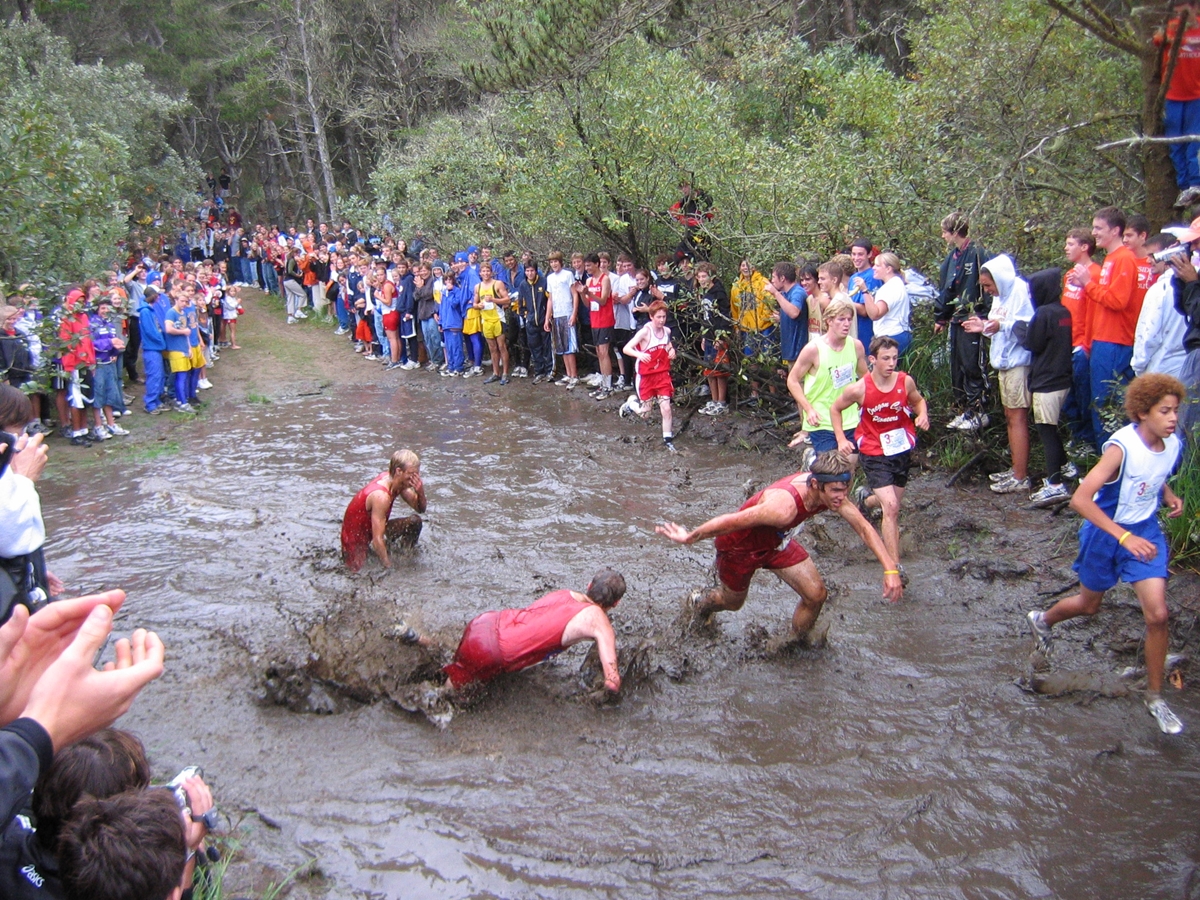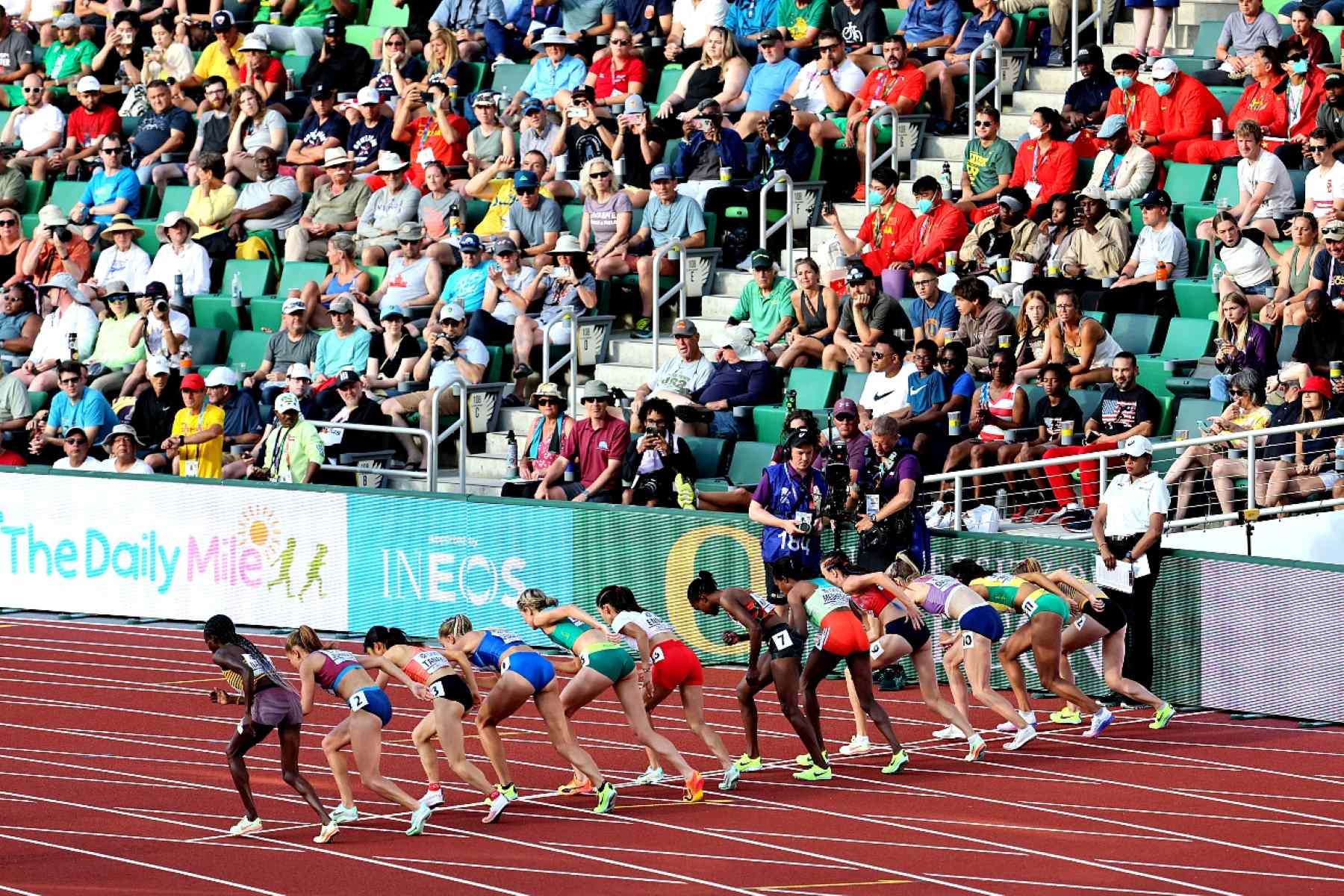Home>Misc>Featured>How To Qualify For The Olympics In Track And Field
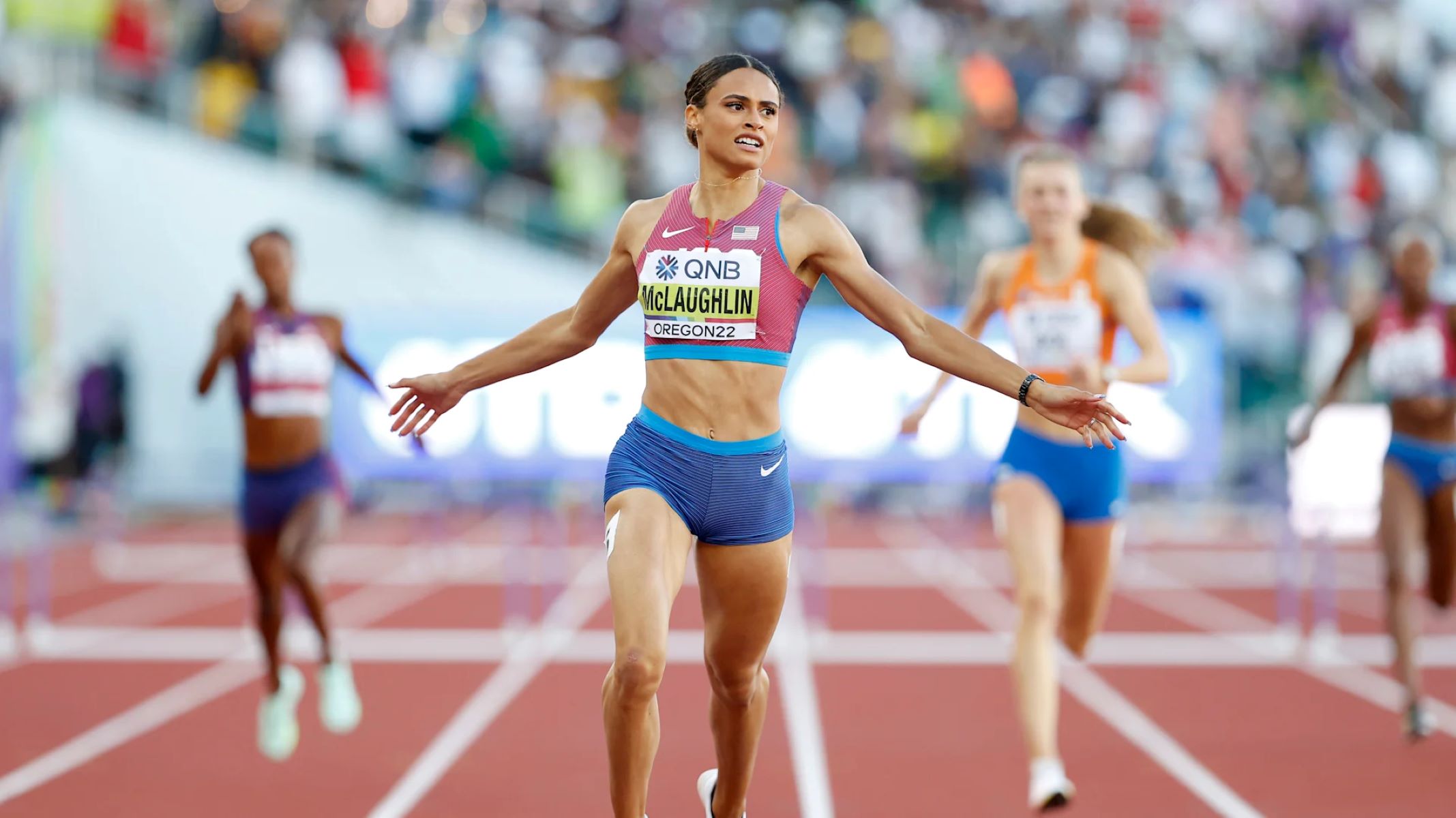

Featured
How To Qualify For The Olympics In Track And Field
Published: September 15, 2023
Learn how to qualify for the Olympics in track and field and become a featured athlete in this ultimate guide to success.
Introduction
Welcome to the world of track and field, where speed, agility, and athleticism come together to create thrilling athletic performances. The Olympics, undoubtedly the pinnacle of sporting events, showcase the finest track and field athletes from around the globe. If you’ve ever dreamed of representing your country on the biggest stage, this article will guide you through the process of qualifying for the Olympics in track and field.
Participating in the Olympics is no small feat. It requires years of dedication, hard work, and relentless training. Only the best athletes who meet the strict qualifying standards set by the International Olympic Committee (IOC) earn the opportunity to compete at the prestigious event.
So, what does it take to qualify for the Olympics in track and field? This article will provide you with a comprehensive understanding of the qualification process, from setting personal goals to competing in qualifying events and meeting the eligibility criteria. Additionally, we will explore the importance of maintaining a professional attitude and seeking professional guidance to enhance your chances of making it to the Olympic stage.
Preparing for the Olympic Trials, where athletes showcase their skills and compete against fellow talented athletes, is also a crucial aspect of qualifying for the Olympics. In addition, we will delve into the significance of mental preparation to overcome the pressures and challenges that come with Olympic-level competition.
Whether you are a seasoned track and field athlete or just beginning your journey, this article will provide invaluable insights to help you navigate the qualification process and increase your chances of realizing your Olympic dream.
Understanding the Qualification Process
The qualification process for track and field events at the Olympics can be complex, as it varies depending on the event and the athlete’s nationality. The International Association of Athletics Federations (IAAF) sets the standards and criteria for qualification, in collaboration with the IOC.
Each event has a specific entry standard that athletes must meet to be eligible for the Olympics. These standards are determined based on previous performances and aim to ensure that only athletes who have demonstrated a certain level of proficiency can compete at the Olympic level.
In addition to the entry standards, there are also limits on the number of athletes who can qualify from each country. This quota system ensures representation from a wide range of countries and prevents one nation from dominating the field.
The qualification process consists of a combination of time-based and performance-based standards. Athletes must achieve specific marks or times in designated events to meet the eligibility criteria. These standards are often set higher than those required for other international competitions, reflecting the high level of competition at the Olympics.
Furthermore, athletes must compete in designated qualifying events that are recognized by the IAAF and IOC. These events can include national championships, international meets, and Olympic Trials. The results from these events are used to determine an athlete’s qualification status.
It is important to note that the qualification period for the Olympics generally spans a certain timeframe leading up to the event. The window may vary from event to event, but it typically lasts around one to two years. This allows athletes to compete and achieve the necessary qualifying standards within a specific timeframe.
The qualification process also takes into account wildcard entries. These are reserved for exceptional cases where an athlete may not have met the standard but is considered to have the potential to make a significant impact on the event. These wildcard entries are typically limited in number and are reviewed and approved by the IOC on a case-by-case basis.
Understanding the qualification process is the first step in working towards Olympic qualification. By knowing the entry standards, the qualifying events, and the timeframes involved, athletes can develop a clear plan and set realistic goals to increase their chances of qualifying for the Olympics in track and field.
Setting Personal Goals
Setting personal goals is a crucial step in the journey to qualify for the Olympics in track and field. Clear and realistic goals provide direction and motivation, helping athletes stay focused and committed to their training and competition efforts.
When setting personal goals, it is important to consider both short-term and long-term aspirations. Short-term goals can be specific to a particular season or competition, while long-term goals focus on the ultimate objective of qualifying for the Olympics.
Start by evaluating your current performance level and identifying areas that need improvement. Determine the specific events or disciplines in which you want to compete and excel. Assess your strengths and weaknesses in those areas, and set goals that challenge you to continuously raise the bar.
Setting performance-based goals is essential. For example, you might aim to improve your personal best time, increase your jumping distance, or enhance your throwing distance. These goals can be expressed numerically, making them measurable and trackable.
It is also important to set process-oriented goals that focus on improving technique, consistency, and overall skills. These goals can include working on specific drills, refining your form, or incorporating strength and conditioning exercises into your training regimen.
In addition to performance and process-oriented goals, consider setting outcome goals. These goals focus on the end result and can include qualifying for specific competitions or achieving specific rankings within your country or region. These goals help you stay motivated and provide a sense of purpose and accomplishment.
When setting your goals, ensure they are challenging yet realistic. Push yourself to strive for excellence, but also be aware of your current capabilities and progress incrementally. Break down your long-term goals into smaller, manageable steps to make them more attainable and to track your progress along the way.
Write down your goals and review them regularly. This helps to reinforce your commitment and keeps you accountable to yourself. Celebrate milestones and achievements along the way, as this will boost your confidence and motivation.
Remember, goals may need to be adjusted based on various factors, such as injuries, changes in training plans, or unforeseen circumstances. Stay adaptable and flexible, but always keep your eye on the ultimate goal of qualifying for the Olympics in track and field.
Setting personal goals is a vital component of the qualification process. It provides focus, direction, and motivation, helping athletes navigate the challenges and push themselves to achieve their Olympic dreams.
Improving Athletic Performance
Improving athletic performance is a key aspect of preparing to qualify for the Olympics in track and field. Enhancing your physical abilities and honing your skills will give you a competitive edge and increase your chances of meeting the rigorous qualifying standards.
The first step in improving athletic performance is to establish a well-rounded and comprehensive training program. This program should encompass various elements, including endurance training, strength training, speed and agility training, and technique refinement.
Endurance training is vital for track and field athletes, as many events require sustained effort over extended periods. Incorporate aerobic exercises, such as long-distance running or cycling, into your training regimen to build cardiovascular fitness and enhance stamina.
Strength training is essential for developing the power and explosive strength needed in track and field events. Focus on exercises that target specific muscle groups used in your chosen events, such as squats and lunges for lower body strength, and overhead presses for upper body strength.
Speed and agility training help you improve your acceleration, quickness, and agility on the track. Incorporate drills that focus on sprinting technique, change of direction, and reaction time to enhance your overall speed and agility.
Refining your technique is crucial for optimizing performance in track and field events. Seek guidance from experienced coaches or trainers who can analyze and provide feedback on your form and suggest specific drills or exercises to improve your technique.
Aside from physical training, proper nutrition and hydration play a significant role in improving athletic performance. Fuel your body with a balanced diet consisting of nutrient-rich foods, including lean proteins, whole grains, fruits, and vegetables. Hydrate adequately before, during, and after training sessions and competitions to maintain optimal performance and prevent dehydration.
Rest and recovery are equally important components of improving athletic performance. Allow your body sufficient time to recover and rebuild after intense training sessions. Incorporate rest days into your training schedule and prioritize quality sleep to optimize your body’s ability to repair and regenerate.
Regularly assess and monitor your progress to identify areas for improvement. Keep detailed training logs, track performance metrics, and analyze your results to identify strengths and weaknesses. Use this information to make necessary adjustments to your training program and to set new goals that align with your progress.
Lastly, surround yourself with a support system that includes coaches, trainers, fellow athletes, and family and friends who can provide encouragement, guidance, and motivation throughout your journey. Their support can make a significant difference in your ability to stay focused and committed to your training.
Improving athletic performance requires dedication, discipline, and a commitment to constant growth and improvement. By implementing a well-rounded training program, focusing on technique refinement, and paying attention to nutrition and recovery, you can enhance your overall athletic abilities and position yourself for success in the quest to qualify for the Olympics in track and field.
Competing in Qualifying Events
Competing in qualifying events is a crucial step in the journey to qualify for the Olympics in track and field. These events provide the platform for athletes to showcase their skills, meet the required standards, and earn their spot on the Olympic team.
Qualifying events can include national championships, international meets, and specifically designated Olympic Trials. These events are recognized by the International Association of Athletics Federations (IAAF) and serve as the primary avenue for athletes to achieve the qualifying standards.
Prioritize participating in events that align with your goals and offer strong competition. These events provide valuable opportunities to test your skills against top athletes in your discipline, allowing you to gauge your progress and identify areas for improvement.
When competing in qualifying events, it is important to approach each competition with a strategic mindset. Develop a race plan or competition strategy that maximizes your strengths and minimizes weaknesses. Work closely with your coaches to determine the best approach for each specific event.
Stay focused on your own performance and avoid getting distracted by your competitors. While it’s important to be aware of other athletes’ capabilities, keep in mind that your primary focus should be on executing your own race or event to the best of your abilities.
Utilize qualifying events as learning experiences. Analyze your performance, including both successful elements and areas for improvement. Take note of any technical flaws or tactical errors and work with your coaches to address them in your training.
Strive to perform at your best in each qualifying event, but understand that not every competition will yield the desired result. Track and field is a highly competitive sport, and even the most talented athletes have off days. Learn from setbacks, stay resilient, and keep your eyes on the bigger goal.
Networking and building relationships with fellow athletes, coaches, and event organizers at qualifying events can also be beneficial. The track and field community is close-knit, and these connections can provide opportunities for future collaboration, exposure to new competitions, and access to valuable resources.
As you progress through qualifying events, aim to consistently meet or exceed the required standards. Keep track of your performances and ensure they are well-documented, as these results may be crucial when it comes time for Olympic team selection.
Remember, the journey to qualify for the Olympics does not solely rely on a single performance. Consistency, perseverance, and a willingness to learn are key factors in earning your place on the Olympic stage.
Competing in qualifying events allows you to demonstrate your skills, meet the necessary standards, and position yourself for Olympic qualification in track and field. Embrace these opportunities, approach each event strategically, and seize the chance to showcase your talent on the road to the Olympics.
Meeting the Eligibility Criteria
Meeting the eligibility criteria is a crucial step in the qualification process for the Olympics in track and field. In addition to achieving the necessary qualifying standards, athletes must also fulfill certain requirements to ensure they meet the criteria set by the International Olympic Committee (IOC) and the International Association of Athletics Federations (IAAF).
One key aspect of eligibility is nationality. To compete at the Olympics, athletes must be citizens of the country they wish to represent. This means they must hold a valid passport and meet any additional requirements specified by their country’s Olympic governing body.
Another important criterion is age. Athletes must be at least 16 years old during the year of the Olympic Games. However, some events may have higher age requirements. For example, in the marathon, athletes must be at least 20 years old.
In addition to nationality and age, athletes must also comply with the anti-doping regulations set by the World Anti-Doping Agency (WADA). This includes submitting to drug testing and maintaining a clean record, free from any doping violations. Athletes must also adhere to the IOC’s Code of Conduct and maintain a good ethical standing in the sport.
Furthermore, athletes must ensure they are in good standing with their respective national athletics federation and comply with any additional eligibility requirements set by their country. This may include participating in specific qualifying events or attending training camps.
It is important for athletes to familiarize themselves with the eligibility criteria well in advance of the qualifying period. This allows them to address any potential issues or requirements that need to be fulfilled before attempting to qualify for the Olympics.
In the event of a tie for available spots, additional tie-breaking criteria may come into play. This can include factors such as past performances, head-to-head competition results, or the athlete’s world ranking. These tiebreakers can vary depending on the specific event and are determined by the IAAF and IOC.
Meeting the eligibility criteria is essential to ensure fair competition and uphold the integrity of the Olympic Games. By understanding and adhering to these criteria, athletes can position themselves for Olympic qualification and compete alongside the best track and field athletes from around the world.
Maintaining a Professional Attitude
Maintaining a professional attitude is crucial for athletes aspiring to qualify for the Olympics in track and field. It encompasses displaying a strong work ethic, demonstrating sportsmanship, and embodying a mindset of dedication, focus, and resilience.
One key aspect of professionalism is committing to consistent and disciplined training. This involves setting a structured training schedule, adhering to it, and giving maximum effort in every session. Consistency is essential for improving performance and meeting the rigorous qualifying standards.
Professional athletes also prioritize their overall well-being, which includes taking care of their physical and mental health. This involves proper nutrition, sufficient rest, and seeking professional guidance in managing injuries or setbacks. Maintaining a balanced lifestyle helps maximize athletic performance and ensures longevity in the sport.
Sportsmanship is an integral part of maintaining a professional attitude. Respect for fellow athletes, officials, and the rules of the sport is essential. It involves accepting victories graciously and showing resilience and composure in the face of defeat. Sportsmanship builds a positive reputation and fosters a supportive athletic community.
A professional attitude extends beyond the athletic field. Athletes should portray themselves as ambassadors of their sport and display respect and courtesy in all interactions, both within their sport and in their personal lives. This includes maintaining positive relationships with coaches, teammates, and supporters.
Handling pressure and setbacks with grace and resilience is another aspect of a professional attitude. Olympic qualification can be a challenging and highly competitive process, with setbacks and disappointments along the way. Maintaining a positive mindset, bouncing back from setbacks, and learning from failures are all crucial components of a professional attitude.
Developing effective communication skills is also important. Athletes should be able to articulate their needs, goals, and concerns to coaches, trainers, and other support staff. Open and respectful communication fosters a collaborative environment and ensures that everyone is working towards the common goal of Olympic qualification.
Lastly, maintaining integrity is paramount. Adhering to the rules and regulations of the sport, as well as demonstrating honesty and fair play, is essential for maintaining a professional attitude. Doping violations or cheating not only tarnish an athlete’s reputation but can also lead to disqualification from Olympic qualification and potential future competitions.
A professional attitude is not only beneficial for individual athletes, but it also contributes to the overall integrity and positive image of track and field as a sport. By maintaining a professional attitude, athletes can enhance their chances of qualifying for the Olympics and leave a lasting impact on the sport they love.
Seeking Professional Guidance
Seeking professional guidance is a crucial step for athletes aiming to qualify for the Olympics in track and field. Coaches, trainers, and other experts in the field can provide invaluable support, knowledge, and guidance throughout the qualification process.
A qualified coach is an essential asset for any athlete. A knowledgeable and experienced coach can assess an athlete’s strengths and weaknesses, develop personalized training plans, and provide technical instruction to help improve performance. Coaches can also provide guidance on competition strategies, mental preparation, and overall athlete development.
Working with a coach also provides valuable accountability and motivation. Coaches monitor progress, provide constructive feedback, and help athletes stay on track with their training goals. They can also provide objective perspective and guidance during moments of self-doubt or setbacks, helping athletes navigate challenges and maintain focus.
Trainers specializing in strength and conditioning play a significant role in an athlete’s journey to Olympic qualification. These professionals design and implement tailored fitness programs to help athletes build power, endurance, and overall physical capabilities. They also help athletes prevent injuries, recover from training, and optimize their performance.
In addition to coaches and trainers, seeking guidance from sports psychologists or mental performance coaches can also be beneficial. These professionals help athletes develop mental toughness, manage pre-competition nerves, and overcome performance anxiety. They offer strategies for maintaining focus, developing self-belief, and dealing with the pressures of Olympic-level competition.
Physical therapists and sports medicine professionals are instrumental in helping athletes prevent and manage injuries. Regular check-ups, injury prevention programs, and rehabilitation strategies can all contribute to an athlete’s overall well-being and performance. Seeking their guidance can help athletes maintain their physical health and minimize the risk of setbacks during the qualification process.
It is important to seek guidance from professionals who have experience in track and field specifically, as they understand the unique demands of the sport. They can impart specialized knowledge and insights tailored to the specific events an athlete is pursuing.
Networking with fellow athletes who have successfully qualified for the Olympics can also be valuable. These athletes have firsthand experience in the qualification process and can offer insights, advice, and support. Building relationships within the track and field community can provide mentorship opportunities and access to a wider pool of resources and support.
Ultimately, seeking professional guidance allows athletes to benefit from the expertise of individuals who have dedicated their careers to understanding and improving sports performance. Their guidance can prove invaluable in enhancing an athlete’s training, technique, mental preparation, and overall chances of successful Olympic qualification in track and field.
Preparing for the Olympic Trials
Preparing for the Olympic Trials is a crucial phase for athletes seeking to qualify for the Olympics in track and field. The Trials serve as a final opportunity to showcase their skills, compete against top athletes, and secure their place on the Olympic team. Adequate preparation is essential to maximize chances of success during this critical competition.
The first step in preparing for the Olympic Trials is to thoroughly understand the event’s format and schedule. Familiarize yourself with the specific events you will be competing in and the qualification standards that must be met. This knowledge will help you plan your training and competition schedule leading up to the Trials.
Develop a comprehensive training plan that focuses on refining your technique, improving your fitness level, and enhancing your mental resilience. Tailor your training to the demands of your specific events, working closely with your coach to design a program that addresses your strengths and weaknesses.
Practice specific competition scenarios during training sessions to prepare mentally and physically. Mimic the conditions of the Trials as closely as possible, including race starting procedures, event schedules, and even simulating the presence of other competitors. This can help you become more comfortable and confident when the actual Trials begin.
Participate in practice meets or local competitions leading up to the Trials to fine-tune your performance and gain valuable race experience. These events give you the opportunity to assess your readiness, test your strategies, and identify any areas that need further improvement.
Pay attention to the physical and mental aspects of preparation. Maintain a balanced diet, get sufficient rest, and prioritize recovery to ensure your body is in peak condition. Implement mental preparation techniques such as visualization, positive self-talk, and stress management strategies to enhance your mental resilience.
Utilize the expertise of your coach and support team throughout the preparation process. They can provide feedback, offer guidance, and help fine-tune your performance. Set up regular meetings to discuss progress, address concerns, and make any necessary adjustments to your training plan.
Develop a race strategy specific to the Trials. Analyze the strengths and weaknesses of your competitors, and determine how to capitalize on your strengths while minimizing your weaknesses. Work with your coach to practice executing your race strategy and make any necessary adjustments based on evolving circumstances.
As the Trials approach, ensure your logistical preparations are in order. Register for the event within the specified timeframe, familiarize yourself with the competition venue, and make necessary travel arrangements. Take care of any administrative tasks beforehand, so you can focus on your performance during the Trials.
Lastly, maintain a positive mindset and believe in your abilities. Trust the training you have done and the progress you have made. Embrace the pressure and embrace the opportunity to prove yourself among the best in the sport.
Preparing for the Olympic Trials requires meticulous planning, dedicated training, and mental fortitude. It is an intensive process that demands utmost commitment and focus. By putting in the necessary preparation, athletes can increase their chances of performing at their best and earning their spot on the Olympic team.
The Importance of Mental Preparation
Mental preparation plays a crucial role in the journey to qualify for the Olympics in track and field. While physical training is important, a strong and resilient mindset is equally vital for success in the high-pressure environment of elite competition. Mental preparation encompasses various strategies and techniques that help athletes optimize their performance, manage stress, and stay focused on their Olympic goals.
One important aspect of mental preparation is visualization. Athletes can mentally rehearse their events, visualizing the perfect execution of their technique, feeling the sensations of the competition, and envisioning a successful outcome. Visualization helps to build confidence, enhance focus, and familiarize athletes with the competition environment, allowing them to perform at their best when it matters most.
Positive self-talk is another powerful tool in mental preparation. By replacing negative thoughts with positive affirmations and self-belief, athletes can boost their confidence and maintain a resilient mindset. Encouraging oneself with positive phrases and reminding oneself of past successes can help overcome self-doubt and maintain motivation.
Developing effective stress management techniques is crucial for maintaining mental and emotional stability during the qualifying process. Different techniques, such as deep breathing exercises, meditation, or mindfulness practices, can help athletes stay calm, centered, and able to perform at their best under pressure. These techniques can be practiced regularly as part of an athlete’s training routine to build resilience and mental fortitude.
Goal setting is also an integral part of mental preparation. By setting clear and specific goals, athletes can stay focused, motivated, and determined throughout their training and competition journey. Setting both process-oriented goals (such as improving technique) and outcome goals (such as achieving specific results) helps athletes monitor progress and celebrate accomplishments along the way.
Building a strong support system is crucial for athletes to maintain their mental well-being and manage the pressures of Olympic qualification. Surrounding themselves with understanding coaches, supportive teammates, and their families and friends can provide emotional support, encouragement, and a safe space to share concerns. Seeking professional help from sports psychologists or mental performance coaches can also provide athletes with valuable tools and strategies to optimize their mental preparation.
Practicing resilience is essential for managing setbacks and failures. Olympic qualification is a highly competitive process, and athletes may experience disappointments along the way. Developing a growth mindset, embracing challenges, and learning from every experience help athletes bounce back stronger and stay motivated in pursuit of their Olympic goals.
Finally, maintaining a healthy work-life balance is crucial for mental well-being. Athletes should ensure they have time for rest, relaxation, and activities unrelated to their sport. Taking breaks and engaging in hobbies or spending time with loved ones helps prevent burnout and allows athletes to approach their training and competitions with renewed energy and focus.
Mental preparation is a critical component of Olympic qualification. By incorporating visualization techniques, positive self-talk, stress management strategies, goal setting, and building a strong support network, athletes can optimize their mental well-being and enhance their overall performance, increasing their chances of qualifying for the Olympics in track and field.
Conclusion
The journey to qualify for the Olympics in track and field is a challenging and demanding process that requires years of dedication, hard work, and relentless training. By understanding the qualification process, setting personal goals, and striving to improve athletic performance, athletes can increase their chances of realizing their Olympic dreams.
Competing in qualifying events and meeting the eligibility criteria are essential steps towards Olympic qualification. Athletes should approach these events with professionalism, maintaining a dedicated attitude and displaying sportsmanship at all times. Seeking professional guidance from coaches, trainers, and mental performance specialists further enhances an athlete’s training and prepares them for the challenges ahead.
Preparing for the Olympic Trials is a critical phase in the qualification process. Athletes must carefully plan their training, practice race strategies, and ensure they are physically and mentally prepared for the high-stakes competition. The focus on mental preparation cannot be understated, as it plays a pivotal role in maximizing performance, managing stress, and maintaining a resilient mindset.
In conclusion, the journey to qualify for the Olympics in track and field requires a comprehensive approach. By setting personal goals, improving athletic performance, competing in qualifying events, meeting the eligibility criteria, maintaining a professional attitude, seeking professional guidance, and preparing for the Olympic Trials, athletes can increase their chances of achieving their Olympic dreams.
Remember, the road may be challenging, filled with highs and lows, successes and setbacks. But with perseverance, dedication, and a strong belief in oneself, the dream of competing at the Olympics can become a reality. Stay committed, embrace the process, and keep pushing towards your goals. The track and field community awaits the next generation of exceptional athletes who will represent their countries on the Olympic stage.
